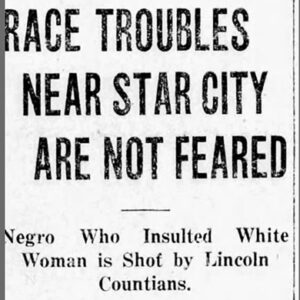 Briggs Lynching Article
Briggs Lynching Article
Entry Category: Criminal Activities
 Briggs Lynching Article
Briggs Lynching Article
Brinkley, John Richard
Broadway, Joseph Eddy (Joe)
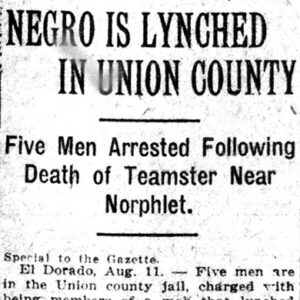 Ed Brock Lynching Article
Ed Brock Lynching Article
Brock, Ed (Lynching of)
Brodie (Lynching of)
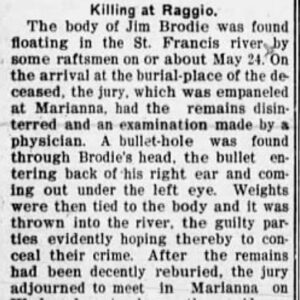 Brodie Lynching Article
Brodie Lynching Article
Brooks (Lynching of)
Brown, Barney (Murder of)
Brown, Frank (Lynching of)
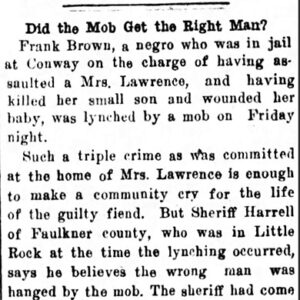 Brown Lynching Article
Brown Lynching Article
 Harve Bruce Conviction Article
Harve Bruce Conviction Article
Bruce, William Harvey (Harve)
Brushy Island Riots of 1915–1917
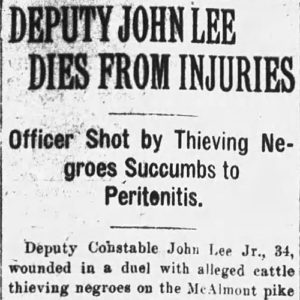 Brushy Island Riots Story
Brushy Island Riots Story
Bryson (Lynching of)
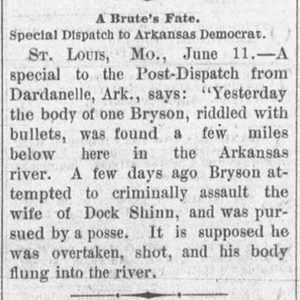 Bryson Lynching Article
Bryson Lynching Article
Bullfrog Valley Gang
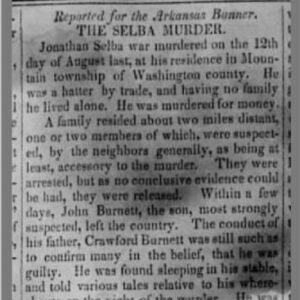 Burnett Family Execution Story
Burnett Family Execution Story
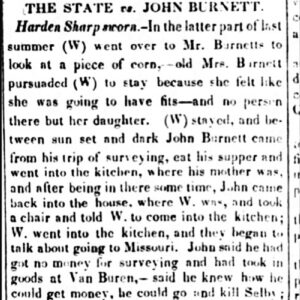 Burnett Trial Story
Burnett Trial Story
Burton-Aikin Feud
Butlerville Lynching of 1882
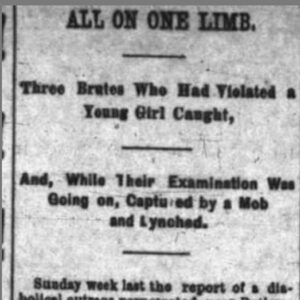 Butlerville Lynching Article
Butlerville Lynching Article
 Zallie C. Cadle Lynching Article
Zallie C. Cadle Lynching Article
Cadle, Zallie C. (Lynching of)
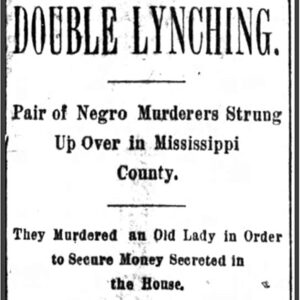 Caldwell and Thomas Lynching Article
Caldwell and Thomas Lynching Article
Caldwell, Will, and John Thomas (Lynching of)
aka: John Thomas and Will Caldwell (Lynching of)
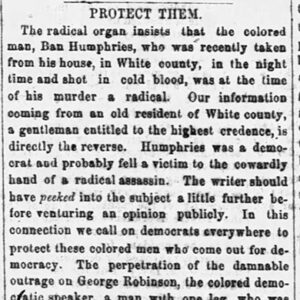 Call for Protection
Call for Protection
Cane Hill Murders of 1839
Canfield Race War of 1896
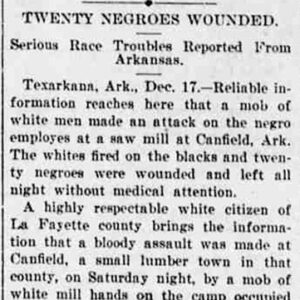 Canfield Race War Article
Canfield Race War Article
Capus, Henry (Lynching of)
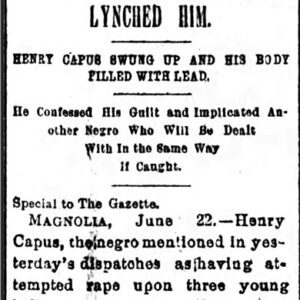 Henry Capus Lynching Article
Henry Capus Lynching Article
 Carroll County Lynching Article
Carroll County Lynching Article
Carroll County Lynching of 1878
Carter, Allen (Lynching of)
Carter, John (Lynching of)
aka: Lonnie Dixon (Execution of)
 Carter Lynching Headlines
Carter Lynching Headlines
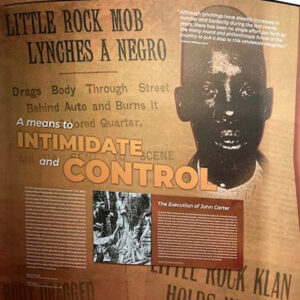 John Carter Display
John Carter Display
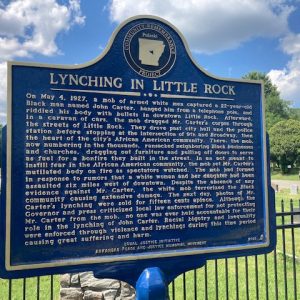 John Carter Memorial
John Carter Memorial
Catcher Race Riot of 1923
 Catcher Tombstone
Catcher Tombstone
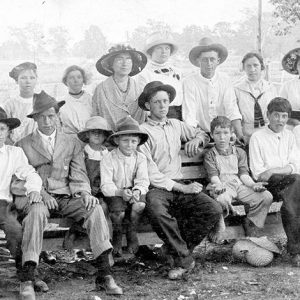 Catcher School
Catcher School
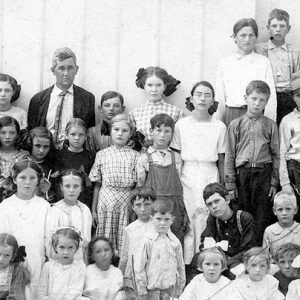 Catcher School
Catcher School
Cates, Sam (Lynching of)
 Sam Cates Lynching Article
Sam Cates Lynching Article
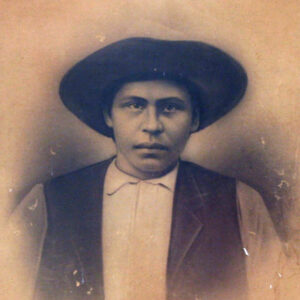 Cherokee Bill
Cherokee Bill
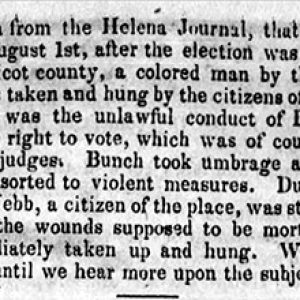 Chicot County Lynching Article
Chicot County Lynching Article
Chicot County Lynching of 1836
aka: Bunch (Lynching of)
 Chism Wanted Poster
Chism Wanted Poster




